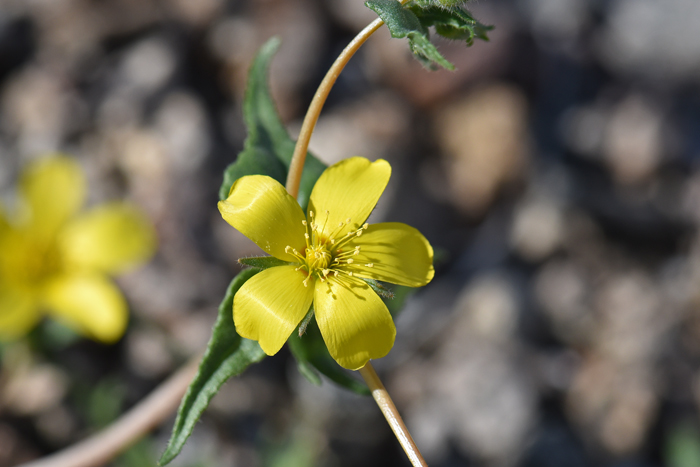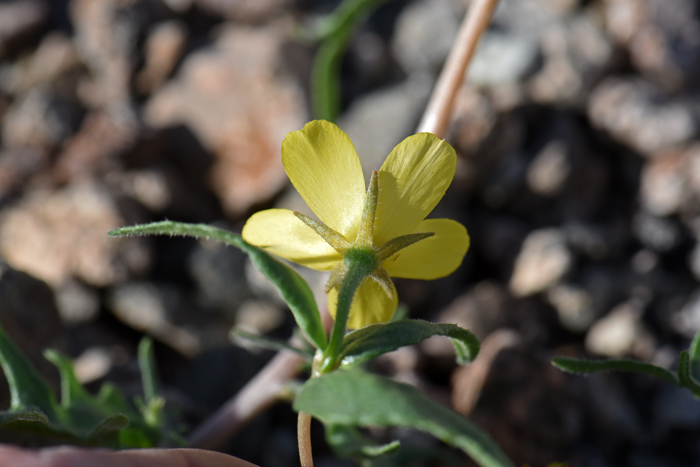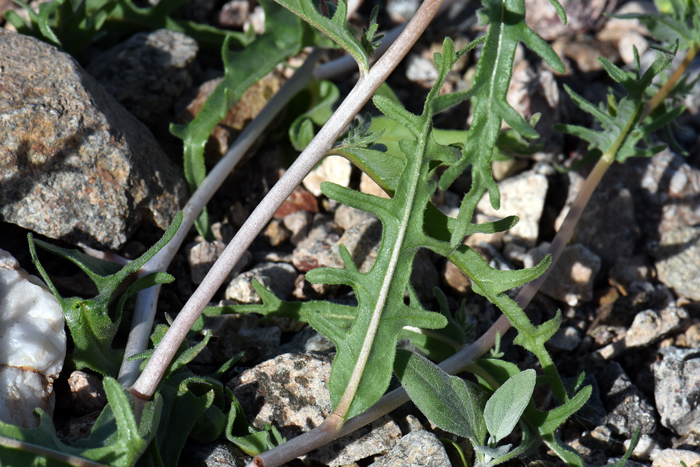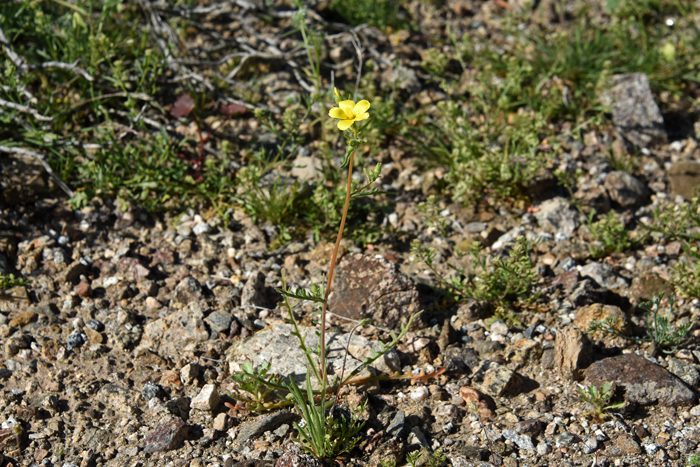Mentzelia veatchiana, Veatch's Blazingstar




Scientific Name: Mentzelia veatchiana
Common Name: Veatch's Blazingstar
Also Called: Whitestem Blazingstar, Whitestem Stickleaf
Family: Loasaceae or Blazingstar Family
Synonyms: (Mentzelia albicaulis var. veatchiana, Mentzelia gracilenta var. veatchiana)
Status: Native
Duration: Annual
Size: Up to 16 inches more or less.
Growth Form: Forb/herb; plants erect, pubescent
Leaves: Green; sessile, narrowly elliptic to lanceolate; basal leaves lobed, cauline leaves variable, toothed, lobed or entire.
Flower Color: Orange, yellow, with red; flowers showy, cymose; sessile; 5 sepals, each about ½ as long as the petals; petals 5, ovate, base generally red to orange; stamens 20 to 50 each with linear filaments; fruit an erect or curved capsule.
Flowering Season: February to August; March to June in California.
Elevation: 3,500 to 6,800 feet.
Habitat Preferences: Sandy or loamy soils, deserts, plains, along washes, grassland, scrub and oak/pine woodland.
Recorded Range: Veatch's Blazingstar is relatively rare in the United States where it is found mostly in the southwestern United States; AZ, CA, NV, OR. This species is also native to Baja California and northwest Mexico.
North America & US County Distribution Map for Mentzelia veatchiana.
U.S. Weed Information: No information available.
Invasive/Noxious Weed Information: No information available.
Wetland Indicator: No information available.
Threatened/Endangered Information: No information available.
In the southwestern United States: Arizona has 28 species of genus Mentzelia, California has 29 species, Nevada has 26 species, New Mexico has 20 species, Texas has 17 species, Utah has 21 species. All data is approximate and subject to taxonomic changes.
Comments: Mentzelia veatchiana inter grades with 4 species in Mentzelia making identification difficult.
In Southwest Desert Flora also see: Whitestem Blazingstar, Mentzelia albicaulis; Adonis Blazingstar, Mentzelia multiflora.
Mentzelia veatchiana has been used for several purposed by southwestern United States indigenous peoples.
See complete listing of ethno-botanical uses at Native American Ethnobotany, University of Michigan, Dearborn.

